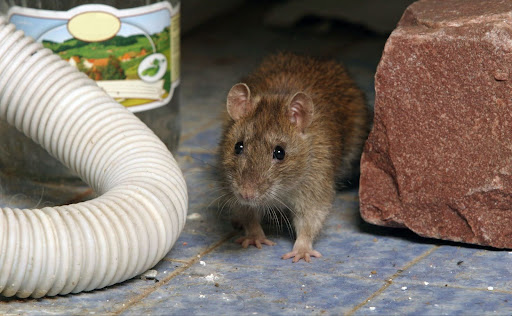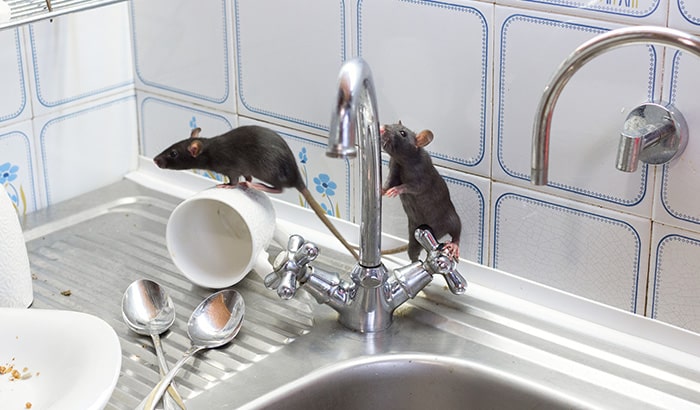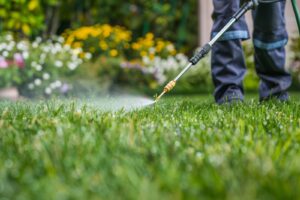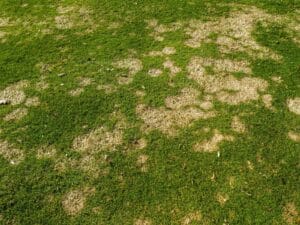As the winter chill sets in and we retreat to the warmth of our homes, we’re not the only ones seeking shelter from the cold. This is the time of year when many household pests also look for cozy corners to call their own, making winter pest control a necessity.
From the quiet creep of spiders in the attic to the stealthy scurry of mice in the basement, these uninvited guests sometimes turn our winter wonderland into a less-than-pleasant experience. But fear not! With the right knowledge and tools, you’ll fortify your home against these winter invaders.
In this comprehensive guide, we’ll explore some indoor pest control strategies tailored to ensure your winter season is as cozy and pest-free as possible. Whether you’re dealing with common annoyances like ants and cockroaches or defending against the stealthy bed bug, we’ve got you covered with effective and practical solutions.
So, grab a cup of hot cocoa, and let’s dive into keeping your home a serene sanctuary this winter, free from invasive pests.
Understanding indoor pests in winter
Understanding common indoor winter pests is key to effective prevention and control. Here’s an overview of some typical pests that tend to invade homes during winter:
- Rodents (mice and rats).
- Spiders.
- Cockroaches.
- Ants.
- Bed bugs.
- Moths.
- Silverfish.
- House and fruit flies.

Prevention is the best defense
Preventing pests from entering your home is more effective and less troublesome than dealing with an infestation. Here are essential strategies to fortify your home against indoor winter pests:
Seal entry points
Regularly inspect the exterior of your home for any cracks in the foundation, gaps around windows and doors, and openings around utility pipes and vents.
Use caulk to seal small openings and expandable foam or steel wool for larger gaps, especially in areas prone to rodent infestations. Ensure weather stripping around doors and window frames is intact, and consider installing door sweeps to block entry under doors.
Control moisture
Fix leaking pipes, faucets, and any other moisture issues in your home. Use dehumidifiers in damp areas like basements and ensure good ventilation in kitchens, bathrooms, and laundry areas. Regularly check and clean gutters and downspouts to ensure proper drainage that leads water away from your home’s foundation.
Proper food storage and waste management
Store pantry items in airtight containers, especially grains, cereals, and sugars. Keep your kitchen clean; promptly clean up crumbs and spills. Dispose of garbage regularly in sealed bins, and consider composting organic waste to minimize food waste in the trash.
Reduce clutter
Regularly declutter your home, especially storage areas like basements, attics, and closets. Avoid stacking newspapers, magazines, or cardboard; these attract pests like cockroaches and silverfish. Keep storage areas organized and off the ground to eliminate potential nesting sites.
Natural pest control methods
Incorporating natural pest control methods into your home management is an effective and environmentally friendly way to deter pests. Here are some strategies:
DIY solutions
Vinegar spray
Mix equal parts of water and vinegar and use it to clean surfaces. The strong scent of vinegar repels many pests, including ants and spiders.
Baking soda and sugar
A mixture of baking soda and sugar is an effective bait for roaches and ants. The sugar attracts them, and the baking soda is lethal to them.
Diatomaceous earth
This is a powder made from fossilized algae. When sprinkled in areas where pests travel, it can effectively kill many types of insects by dehydrating them. Apply these solutions in areas where pests are frequently seen, but be mindful of pets and children when using substances like diatomaceous earth.
Using natural predators
Try incorporating natural predators of common pests to keep their population down. Introducing ladybugs into your indoor garden helps control aphid populations, for example.
While often considered pests themselves, spiders are natural predators of many insects. Allowing non-venomous spiders to reside in corners of your home might reduce the population of other pests.
Be cautious when introducing any predators into your home. Ensure they are suitable for your specific environment and won’t become a nuisance.
Essential oils and herbs
If you’re looking for natural remedies for winter pest control, peppermint oil, neem oil, and certain herbs could be perfect for you.
Peppermint oil
This oil is a natural deterrent for many insects, including spiders and mice. Soak cotton balls with peppermint oil and place them in areas where pests are active.
Neem oil
Neem oil is effective against a wide variety of pests. Dilute and spray this oil in areas of infestation.
Herbs
Planting herbs like basil, lavender, and rosemary deter certain pests. Grow these in small indoor planters and place them near potential entry points.
Regularly replenish these natural repellents to maintain their effectiveness. It’s important to use essential oils carefully, especially around pets and children, as some can be harmful if ingested.

Chemical pest control
While natural methods are often effective for winter pest control, there are situations where chemical solutions become necessary. Here’s a guide on when to consider them, how to use them safely, and an understanding of the different types available:
When to consider chemical solutions
- Severe infestations: If natural remedies and preventive measures fail, you’re facing a large-scale infestation, or you’re dealing with a particularly resilient pest infestation.
- Rapid response required: Certain pests, like termites or bed bugs, require immediate and aggressive treatment to prevent significant damage or health risks.
- Lack of effectiveness from natural methods: If you’ve tried various natural methods and the pests persist, chemical interventions might be needed.
Different types of chemical treatments
- Sprays: These are commonly used for a wide range of pests. It’s easy to use them as spot treatments or for broader applications, depending on the product.
- Baits: Often used for ants and cockroaches, baits attract pests and then poison them. They are typically slower-acting but are effective in targeting the entire colony.
- Traps: Useful for rodents and some insects. Chemical traps often contain attractants and a sticky or lethal substance to capture and kill pests.
- Insect Growth Regulators (IGRs): These are chemicals that disrupt the life cycle of insects, preventing them from reproducing or maturing properly.
Keeping pests out of specific areas
Different areas of your home attract different types of winter pests. Here’s how to focus your pest control strategies based on specific rooms:
Bedroom (focusing on bed bugs)
Regularly check your bed, especially the mattress seams, bed frames, and headboards, for signs of bed bugs. Encase mattresses and pillows in protective covers to prevent bed bugs from hiding in them.
Regular vacuuming helps remove any early bed bug infestations. Inspect and clean secondhand beds, bedding, and furniture thoroughly before bringing them into your home. Minimize clutter in your bedroom to reduce hiding spots for bed bugs.
Kitchen (focusing on ants and cockroaches)
Keep food in airtight containers, and avoid leaving it out on counters. Wipe down counters, sweep floors, and clean up spills immediately to remove food residues. Dispose of garbage regularly and use a trash can with a tight-fitting lid.
Check for and seal any cracks or openings around pipes, windows, and doors. Fix leaky taps and ensure the kitchen is well-ventilated to discourage moisture-loving pests.
Basement and attic (focusing on rodents and spiders)
These areas are common entry points for rodents and spiders. Seal any cracks in walls or foundations and gaps around windows or vents. Use dehumidifiers in basements to control moisture, which attracts many pests. Avoid storing items in cardboard boxes, which can attract rodents. Use sealed plastic bins instead.
Periodically inspect and clean these areas, as they are often less frequented and might become hotspots for pest activity. If you’ve had issues with rodents, setting humane traps in strategic areas will help monitor and control their population.
By focusing on these specific strategies for different areas of your home, you’ll create an effective line of defense against common household pests. Remember, the key to successful pest control is regular monitoring and maintenance combined with targeted prevention measures.
Indoor pest control with Summit Lawn & Pest Control
Are you noticing unwanted guests making themselves at home this winter? Tackling winter pest problems can be challenging, especially during the colder months when they’re seeking refuge in your cozy home. But you don’t have to face this alone — Summit Lawn & Pest Control is your expert partner in ensuring a pest-free environment all winter long.
With our comprehensive understanding of winter pests and effective control strategies, we’re equipped to tackle any issue, big or small. Whether it’s rodents in the attic, cockroaches in the kitchen, or bed bugs in the bedroom, our team of skilled professionals will provide effective solutions tailored to your specific needs.
Don’t let pest worries chill your winter warmth. Contact Summit Lawn & Pest Control today and experience the peace of mind that comes with a secure, pest-controlled home. Let’s work together to keep your winter season comfortable, safe, and pest-free!







